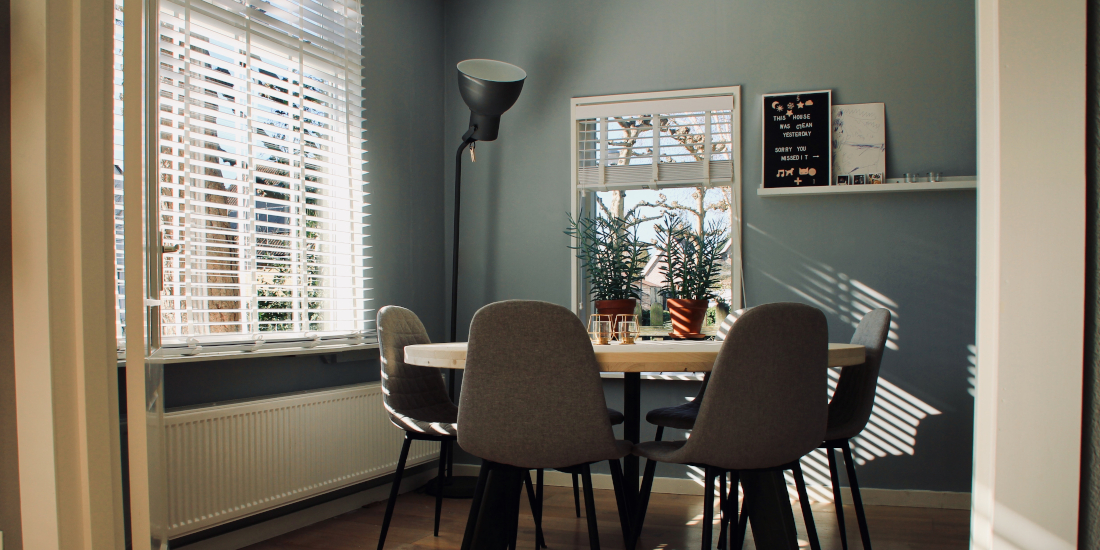
Q: My partner and I are both working from home and our kids are trying to attend school virtually right. On top of the expected stress from this new normal, our house just isn’t set up to be used as an office—some rooms are so dim we get headaches from working in the dark. Others are too bright, so we can barely see our screens. How can we make our house more comfortable for both work hours and relaxing as a family?
A: Good daylighting is essential to a well-designed home; if not properly balanced, lighting can make an otherwise good space very unpleasant, either from too much glare or by being dark and gloomy. Understanding how to manipulate daylight allows you to maximize comfort, reduce energy consumption, and enhance special architectural features and furnishings.
The characteristics of daylight at a particular location will dictate the most effective means to control it, such as orientation of the building, window size and location, roof overhangs, and even various interior finishes. A room with direct sunlight available for most of the day will lead to solutions very different from a location surrounded by tall evergreens.
Strategically placed windows and skylights can significantly reduce the need for artificial lighting, while providing a more desirable quality of light. You may not be in a position to add windows or skylights right now, but if you already have a lot of direct sunlight, take care to prevent glare. Direct sunlight can be especially problematic with hard finishes, as they often create unwelcome reflections and significant visual discomfort. I have seen a few homes that require sunglasses indoors on a sunny day! For a quick fix, try adding rugs, table cloths to hard, reflective surfaces like tile floors and wood dining tables. Layer window coverings, from sheers to blackout curtains, so you have the flexibility to adjust as the sun shifts throughout the day.
While maximizing daylight in a space is generally preferred, more artificial lighting is not necessarily better. Thoughtful lighting design is key, but it is unfortunately not uncommon for the residential interior lighting to be an afterthought. A qualified lighting designer or interior designer can provide suggestions for appropriate light fixtures, as well as proper placement and controls. The emotional and physiological impact of these choices cannot be overstated.
Artificial lighting is seeing a renaissance today, with the advent of LED lighting and the introduction of digital control systems. Today, there are many apps and programs that allow you to control lighting from your smartphone or tablet, whether you want to set a more neutral white light for doing crafts at the kitchen table or to dim the lights for movie night. Utilizing this emerging technology can greatly improve the usefulness and flexibility of your home.
Because LED lighting uses so little power compared to typical incandescent lighting, it may be possible to retrofit an existing home with a higher level of illumination, using a greater number of strategically-placed fixtures, and even introduce museum-quality lighting to highlight special artwork or architectural features, all while using less electricity! The possibilities are almost endless.
Philip W. Frisk, AIA, is a principal at PWF Architecture, a member of the Master Builders Association of King and Snohomish Counties (MBAKS). If you have a home improvement, remodeling, or residential homebuilding question you’d like answered by one of MBAKS’ more than 2,600 members, write to homework@mbaks.com.